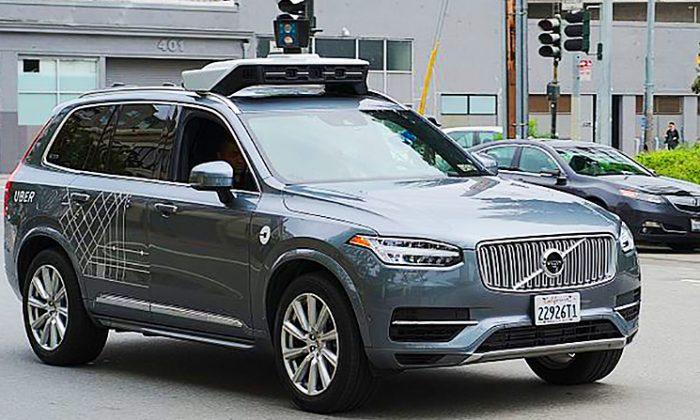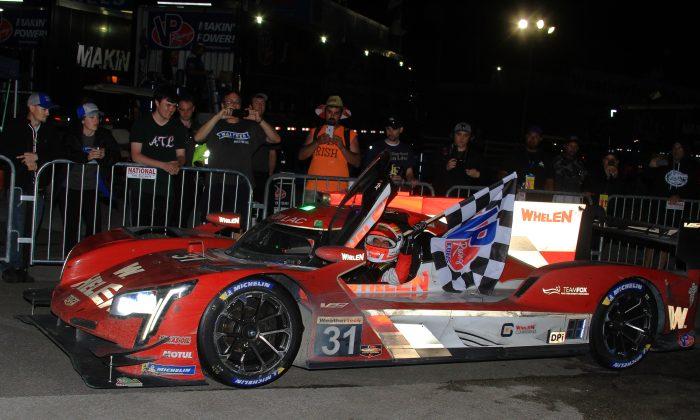Arizona’s governor, Doug Ducey, has gone out of his way to make Arizona friendly to autonomous vehicle (AV) companies. Documents turned up by The Guardian show that the governor had an exceptionally friendly relationship with one such company, Uber. It was an Uber AV, which struck and killed a pedestrian on the night of March 18—the first recorded fatality caused by an autonomous vehicle.

The Guardian has obtained a series of emails between Uber and Ducey, sent between 2015 and 2017, which indicate that the governor acted on Uber’s behalf with other Arizona state officials, while Uber promised to bring jobs to Arizona.
Wide-Open Spaces
Uber, a San Francisco-based company, started testing its AVs in California—before it got state permission. This led to Uber being temporarily banned from testing there. California has some of the strictest AV laws in the nation. The state requires extended and detailed reporting on how the AV vehicles perform, and how often safety drivers have to intervene. Arizona, (and Florida and Michigan) have very lax laws and in the case of Arizona, no reporting requirements. A December 2016 press release from the Arizona Department of Transportation states, “Part of what makes Arizona an ideal place for Uber and other companies to test autonomous vehicle technology is that there are no special permits or licensing required,” AZCentral reported. Uber Intel Corp., General Motors Co., and Waymo, the Google offspring, all have AV programs in the greater Phoenix area, according to AutoNews, all taking advantage of the permissive regulations.
Arizona’s Uber Turnaround
Under the previous governor, Jan Brewer, Arizona was not particularly friendly to Uber. Gov. Brewer did not allow Uber drivers to register as rideshare taxis. Arizona law required any vehicle transporting passengers commercially to get commercial insurance and required drivers to get a commercial driver’s license. Uber drivers simply did not. In 2014 Brewer vetoed a bill, which would have allowed Uber to operate. Shawn Marquez, acting director of Arizona Department of Weights and Measures, was responsible for overseeing commercial drivers. He agreed with Brewer that the bill wasn’t strong enough, citing its lack of requirements for both insurance and drug testing. However, “Despite the veto, Uber and Lyft are continuing to operate,” Marquez told AZCentral.com in 2014. Uber began courting Ducey shortly after he took office in 2015. Uber Senior Vice President David Ploufe and Justin Kintz, of Uber’s Public Policy & Communications department, met with Ducey in February of that year, The Guardian reported.
One week later Kintz sent Ducey a letter saying “I know [David Plouffe] and [Uber founder] Travis [Kalanick] are as excited as I am to expand our footprint in Arizona, and we are encouraged that the state Legislature is interested in codifying a permanent regulatory structure for ridesharing.”
In April 2015, Ducey signed a bill allowing ride-sharing taxis to operate exempt from the laws and regulations governing standard taxis. The governor was flanked by Uber executives at the signing ceremony.
Uber came through with the jobs it promised. In June 2015 Uber opened a customer support center in Phoenix, creating 300 jobs.
In August 2015 Uber donated $25,000 to University of Arizona’s College of Optical Sciences, The Guardian reports.
On the same day the gift was announced, Ducey signed an executive order allowing public testing of AV cars so long as they had human backup drivers on board. That same order allowed fully unmanned AVs on college campuses.
The email exchanges continue throughout 2016 and 2017, with Uber constantly thanking and praising the governor for his efforts to give AVs a free range in Arizona.
In March 2018, less than three weeks before the fatal accident, Ducey signed another order, allowing driverless AV cars to operate on public roads.
Waymo, the ABC-owned AV company, began testing driverless AV taxis in Carlsbad, Arizona, at that time. (ABC is the parent company of Google.)







Friends Read Free